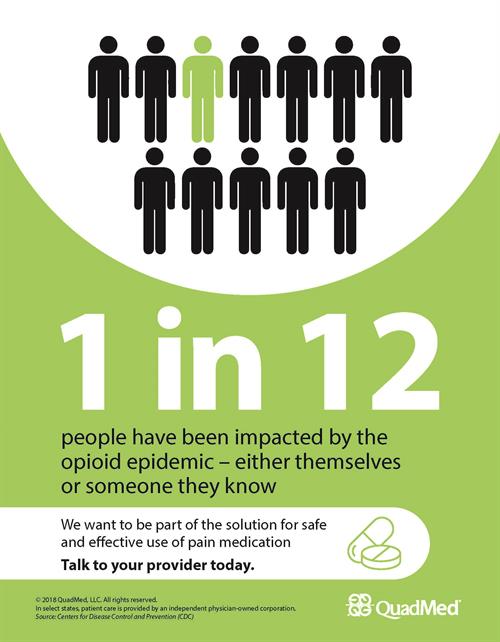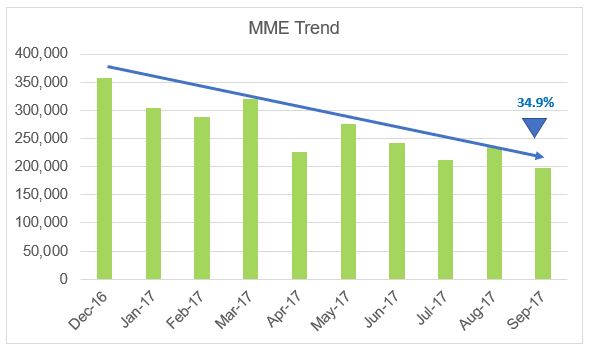Case Study: QuadMed Journey to Safer Opioid Prescribing

SUMMARY
In 2017, QuadMed set out to reduce the amount of opioids, or narcotics prescribed, with the ultimate goal of reducing the morphine milligram equivalent (MME) by 25% across the organization.
Through a combination of provider and patient education, technology and stricter prescription policies, QuadMed saw an astounding 34.9% reduction in total MME over a ten-month period.
THE CHALLENGE
While the main focus of most opioid reduction efforts is to save lives, the purpose of the QuadMed study was to combat the issue of addiction at the source – before problems begin.
MME was used as the measurement as the value provides an “apples-to-apples” comparison of each opioid’s potency. In December of 2016, the MME for the entire QuadMed organization exceeded 350,000 milligrams. The challenge was to decrease that amount by 25% over the next ten months.
THE SOLUTION
Provider education was the first step. Virtual learning collaboratives were established, and the highest prescribers attended monthly meetings to share data and discuss safer solutions, helping to limit the MME of opioid prescriptions being written. Existing opioid supplies was also reduced by QuadMed through partnerships with community drug take back programs.
Education on safe opioid use was also extended to our client partners and patients of QuadMed. Educational posters and fliers were displayed in the organization’s onsite health centers, and mailers regarding the dangers of opioid misuse were sent to patients’ homes. QuadMed also pushed to equip employers with nasal Narcan in the event of an accidental opioid overdose in the workplace.
In addition to education, technology played a significant role in the organization’s overall reduction efforts. A total MME calculator, MME weaning tool and controlled substance agreement were all embedded directly in the EMR, along with a link to the state registry to ensure that patients were not misusing or abusing opioids.
To ensure compliance among providers and patients, a stricter prescription policy made checking the state registry a requirement when writing a new prescription or refilling medications. The policy also prohibited prescriptions for addiction or detoxification. Lastly, controlled substance contracts were required to be signed by all patients.
THE RESULTS
• 34.9% decrease in total MME
• 75% of providers decreased MME*
• 86% decrease in high-risk medication combinations

Total MME across the QuadMed organization went from over 350,000 mg to less than 200,000 mg over a ten-month timespan – a 34.9% decrease. In addition to surpassing the 25% goal, QuadMed achieved some other important results. Throughout the course of the study, 75% of providers managed to lower their total MME, and there was an 86% decrease in high-risk medication combinations.
Many of the solutions implemented during the study are still in place both inside and outside of QuadMed, as the success of the study prompted the onsite health care provider to partner with the community. Data from the study, as well as education for providers and patients has been shared with other health care providers, helping to make opioid prescribing safer while also reducing overall supply.
*Providers without a decrease had acquired patients from a retiring provider
